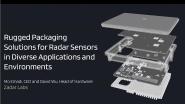Design Automation
What is Design Automation?
Design automation is the automated execution of design tasks by software, enabling users to create and manufacture products quickly by eliminating the human labor that was previously necessary to produce a design. Design automation can eliminate engineering inefficiencies and reduce mistakes by closing the gap between sales, design, and manufacturing teams. Design automation can be semi-automated in which human designers use designer tools or fully automated in which systems entirely complete design work.
Electrical and automation engineers collaborate on the same backbone, using a unified data model, which saves time and eliminates mistakes. Design automation helps to improve communication throughout the business by directly integrating mechanical engineering data and receiving updates. By merging mechatronic models of current designs with rule-based engineering to remove non-value-added effort, integrated approaches enhance the effectiveness of engineering outcomes while boosting efficiency. When paired with software virtual commissioning abilities, the whole process from idea to reality is completed quicker than ever before.
Background
The IBM first coined the concept of design automation in their Journal of Research and Development in 1963. Through this advancement, a computer program was written to aid in the search for logic circuits with specific constraints on the design of the hardware. The written program was also intended to evaluate the produced logic regarding its ability to discriminate against samples of sets they are anticipated to identify. In modern engineering, the traditional computer design automation has been transformed to design automation by using biologically inspired concepts of machine learning, evolutionary computation, and swarm intelligence algorithms.
Uses and Applications of Design Automation
To satisfy the ever-increasing need for standards and quality, sequential physical prototyping is increasingly being replaced with a digital prototype of a good design, which strives to achieve numerous criteria such as maximal production, energy efficiency, maximum speed, and low cost. The design process is concerned with obtaining the optimal design within a feasible range through knowledge or optimization and creating a new and superior design beyond the current ones via creation and innovation. Design automation is used and applied in the following areas:
- Technology design- design automation is used in designing semiconductors in which billions of components are integrated. In the modern world, software architecture and designs are also being automated through artificial intelligence.
- Visual design- design automation is also applied in web design and graphic design.
- Infrastructure design- design automation is applied in infrastructural designs such as networks using modelling and simulation tools to produce designs.

































